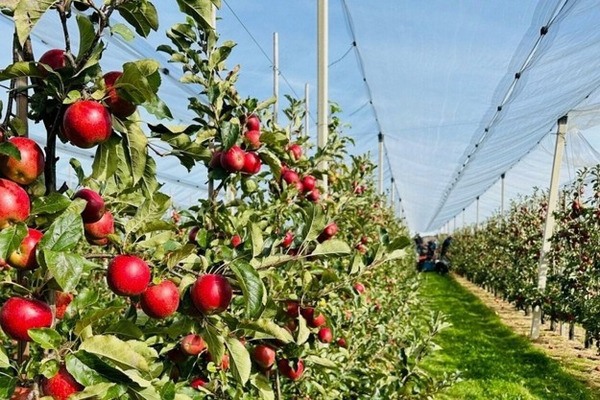The use of orchard coverings, which has now become standard practice for most modern forms of cultivation, actually has a rather recent history. In the 1960s, when our company appeared on the market with the production of pre-stressed reinforced concrete posts, the idea of covering the orchard was certainly not among the farmers' priorities, especially due to the more stable climatic conditions compared to the current ones, with less frequent adverse events.

The widespread use of nets to cover orchards started in the 1980s mainly to protect fruit from hailstorms, then also to deal with rain, shading and culminating in the early 2000s with the introduction of nets to protect crops from insects.
However, experience over the years has recently led to the realization that such covers, in addition to fulfilling their specific functions, can be multifunctional, i.e. capable of performing several tasks and offering different types of protection.
But the most interesting aspect is that the use of these nets can also improve the physiology of plants in various aspects, guaranteeing a better microclimate for crops and giving them multiple advantages in achieving ideal vegetative development.
In this regard, research (Middleton and McWaters, 1996 – 2000) has explored how the use of anti-hail nets in apple plantations could influence the productivity and quality of the fruit; the main parameters measured included air and soil temperature, relative humidity, light intensity and wind speed under the nets compared to uncovered areas.

The results highlighted how anti-hail nets help maintain a more stable temperature under the canopy, reducing thermal stress on plants and leading to greater fruit yield.
Furthermore, they observed that the nets improve the plants' efficient use of photosynthetic light, reducing the risk of sunburn on leaves and fruit during periods of intense sun.
Today, the environmental situation has evolved and become more complicated, presenting itself with mild winters and late frosts, concentrated and more intense rainfall, frequent hail events, excessive wind and insolation, and an increase in alien pathogens.

In support of this thesis numerous experimental tests conducted by the Department of Agro-Food Sciences and Technologies of the University of Bologna, by the Department of Agricultural, Food and Environmental Sciences of the Polytechnic University of Marche, and by the Department of Chemical and Geological Sciences of the University of Modena and Reggio Emilia.
The last example concerns the comparison between two adjacent crops, one in an open field and one covered, with the same late variety of figs. Already after a few months, the plants under the cover showed clear differences from the uncovered ones in terms of vegetative vigor and speed of growth.

In summary, both the experimental and field evidence seem to indicate quite clearly that multifunctional covers act directly on improving the microclimate within the plant and promoting healthier and more productive growth of tree crops.
 For more information:
For more information:
Valente
Tel: +39 049 5565855
Email: [email protected]
www.valentepali.com
